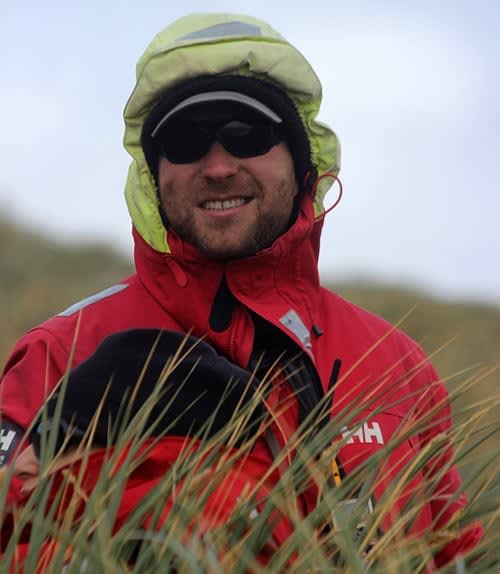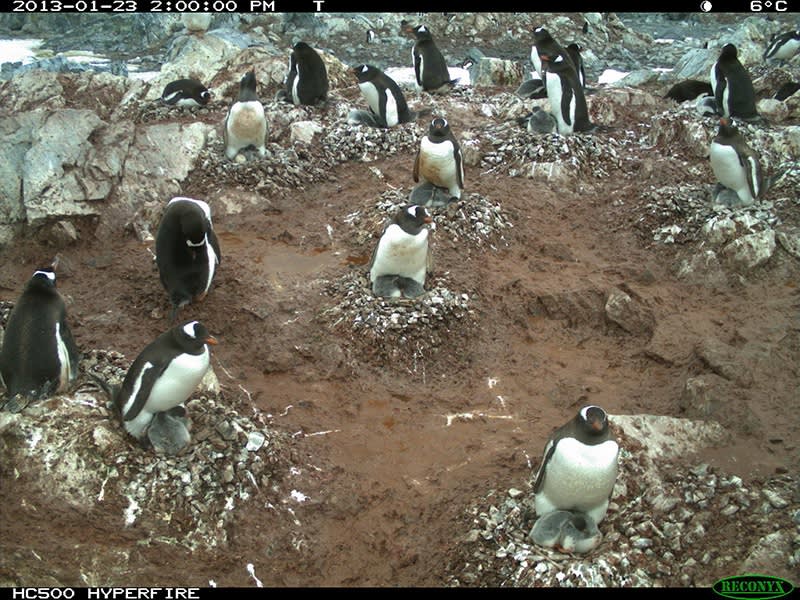The research involved in investigating, exploring and documenting the history, wildlife and natural resources of the Polar Regions takes a massive amount of work for experts in all fields. These research helps us preserve the past and prepare for the future.

As stewards of the Polar Regions, Quark is proud to offer polar researchers and scientists safe passage to the destinations in which they do their great work. As part of the experience, these experts share their knowledge with passengers during on-board lectures and other interactions on their polar cruise.
Through our Scientists in Residence program, we welcome scientists and experts from a wide variety of disciplines to travel with us. In recent months, we’ve introduced you a to microbiologist, a palaeoecologist , and a beluga whale communication specialist.
Another of our “crowd favorites,” thanks to the crowd-sourced research he is conducting, is Dr. Tom Hart, Penguinologist.
 Meet Dr. Tom Hart, penguinologist
Meet Dr. Tom Hart, penguinologist
Tom acquired his PhD in Biology from Imperial College and is part of the Department of Zoology at Oxford University. He is also the author of Introduction to Statistics for Biology, about which Dr. Hart jokes, “It’s a page turner and I encourage everyone to buy a copy.”
He is also the head of Penguin Lifelines, and is working on recognizing the threats to penguins and other Southern Ocean wildlife. “This involves two main strands; genetics of old and current populations plus really detailed monitoring of current populations using cameras,” he explained.
Connecting penguin ancestors to today’s breeds
Because penguins have survived a number of geographical changes (such as ice ages and ice loss), it’s important for us to understand how climate changes of today could influence their survival. One of the greatest indicators is how penguins responded in the past.
With a comparison of the past and the present Dr. Hart and his team are able to determine, for example, that the only three populations of emperor penguins that have survived over 30,000 years, actually survived the last ice age due (in part) to the shelter of the Ross Sea in Antarctica.
This research is essential in preserving a large proportion of polar wildlife, including gentoo, chinstrap, and Adélie penguins.
Get involved in penguin research
Although the research and study of penguins over time has helped us interpret a great deal of what is happening now, the ability to monitor penguin colonies across the Antarctic Peninsula and outlying islands is integral to the study. This has been made possible through a combination of time-lapse cameras and the over 1.5 million members of the public who help interpret images through the Penguin Watch Citizen Scientist volunteer initiative, a project created Tom.
While traveling with Quark, Dr. Hart’s work focuses on accessing and changing the cameras.
“This is an annual race to get around to all of the cameras and change the batteries and memory cards,” Dr. Hart shares on Penguin Lifelines. His team monitors more sites than any of the national Antarctic programs, and does so on a very small budget. The difference this research makes in understanding the Antarctic Peninsula, South Georgia, and other archipelagos around the Scotia are well worth it the challenge.

The inspiration and motivation behind penguinology
For Dr. Hart, much of his inspiration stems from working with the Quark team and naturalists.
“Initially when I started working with Quark, I was collecting samples for genetics. It became obvious how much local knowledge they had that I didn’t. For example, which colonies breed before which and how this might link to competition with the krill fisheries. I was determined to capture this knowledge for science and use it to influence policy.”
His experiences while working on Quark Antarctic expeditions also add to his inspiration, especially his interactions with the crew and passengers.
“Expedition staff and crew are so supportive of what we do. We’ve been able to share our news when we discovered a new penguin colony, or when we landed on the South Sandwich Islands, which was a first for so many of the team,” he’s said.
Quark passengers not only play a significant part in Dr. Hart’s research and inspiration, but benefit from his work by way of “enthusiasm and lots of penguin knowledge.” Onboard, passengers can view time-lapse videos of a year in the life of the places they are visiting. It is because of Dr. Hart’s work that passengers can experience a year in the life of a penguin, in just 30 seconds.

Penguin camera image courtesy of Penguin Lifelines
“I think it helps to explain what people are seeing and more importantly, what happens when they are not there,” he said.
Meet Dr. Hart and the Penguin Lifelines team on your Antarctic cruise
Tom and the team look forward to meeting you! Select members of the team will be part of your Quark experience on the following voyages:
| December 05, 2015 | Antarctic Explorer: 7th Continent |
| December 14, 2015 | Falklands, South Georgia and Antarctica |
| January 1, 2016 | Crossing the Circle: Southern Expedition |
| January 13, 2016 | Antarctic Explorer: 7th Continent |
| January 23, 2016 | Crossing the Circle: Southern Expedition |
| February 4, 2016 | Antarctic Explorer: 7th Continent |
To learn more about the Scientist in Residence program and which experts are scheduled to be part of your small ship expedition or polar holiday, contact one of our Polar Travel Advisers today.









